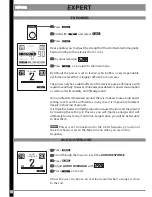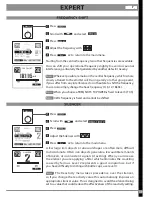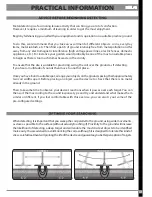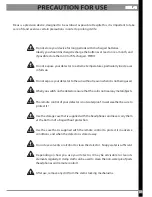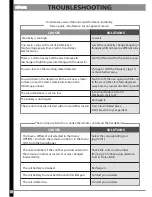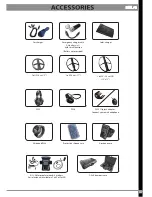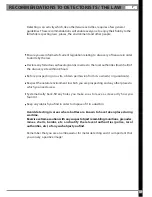
When you are detecting, you are free to choose the rate at which you move.
For example, if you prefer to cover a zone at high speed while detecting, this will certainly give you
a global ‘snapshot’ of the site. However, it is clear that this way of detecting will also leave large
areas of ground unexplored between each sweep. On the other hand, if you insist on closely
scrutinising every inch of the ground, you should ensure that each sweep slightly overlaps the
previous one, in order to reduce to a minimum the area that your coil has not scanned.
You should also bear in mind that you will further increase your chances of finding and identifying
a target by sweeping more slowly. This particularly applies in metal-infested ground (when there
are more targets to be sorted) or when you are searching for deeper targets.
Once the detector has indicated the approximate presence of a target in Motion mode, if you are
having difficulty locating the target then sweep the place where you heard the sound.
Slowly reduce the amplitude of your movements and make a mental note of the spot where the
sound is loudest. If necessary, indicate it with a mark on the ground. Then move a quarter turn
around the spot and begin sweeping again in the same way (at 90° to the first sweep).
You should then locate the precise zone containing your target at the intersection of the two
sweeps, where the sound is loudest.
Continue with crossed sweeps over the target. The loudest and highest pitched audio signal
indicates the centre of the coil and therefore the position of the target.
42
Target
Summary of Contents for DEUS
Page 1: ...USER S MANUAL V 3 0 V 3 0...
Page 2: ......
Page 55: ...53 program 14 program 15 program 16 program17 program18 program 13 program 12...
Page 61: ......
Page 62: ......
Page 63: ......











